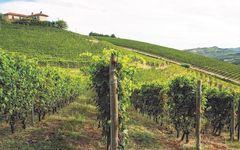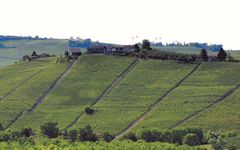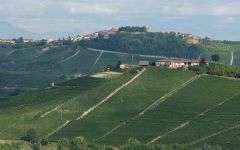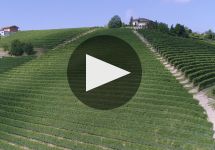Bruna Grimaldi Scassa Barbera d'Alba 2018
-
Robert
Parker



Product Details
Your Rating
Somm Note
Winemaker Notes
With this wine we want to enhance the peculiarities of Barbera which are concentration, freshness, elegance, longevity. It is a style of our own to interpret Barbera. Selected vineyards, low yields and oak ageing are the key factors that contribute to make this wine up to the standards of the Superior appellative.
Intense aromas of red fruits, sour cherries with graphite and menthol notes on the nose. On the palate it is rich and concentrated, mineral and fresh. This freshness gives it longevity and makes it a versatile wine in terms of food pairing
Pair with rich starters, baked fish, cod, pasta all’uovo with meat sauce, red and white meat, matured cheese.
Professional Ratings
-
Robert Parker's Wine Advocate
Named after the difficulties of ripping up the land to ready it for agriculture (to "scassare" in Italian), the Bruna Grimaldi 2018 Barbera d'Alba Superiore Scassa is a dark and concentrated expression with sweet cherry liqueur and blackberry confit. The wine is soft and yielding with a thick textural approach that wraps nicely over the palate. The wine shows so much fruit weight and density, you might try a contrasting food pairing with spicy, smoky or barbecued flavors, including some pasta or pie crust to help soak up the 15% alcohol. This is a well-priced release.
Other Vintages
2021-
Robert
Parker -
James
Suckling
-
Robert
Parker
-
James
Suckling -
Robert
Parker
-
Robert
Parker -
James
Suckling
-
James
Suckling -
Robert
Parker -
Wine
Spectator











Growing grapes and crafting high quality wines have always been Bruna Grimaldi’s family tradition. Born and raised in the hills that link Grinzane Cavour to Serralunga d’Alba, in the heart of Langhe, Unesco World Heritage, Bruna Grimaldi is a small family-owned winery that since the early 60s produce authentic and terroir-driven wines. Careful work in the vineyard, commitment in the winery, respect for the environment are key aspects of Bruna Grimaldi’s philosophy: a passion for wine that has been handed down for decades in Langhe region where the best plots are selected for the production of Barolo. This history talks about the territory, in full respect of the tradition.
The estate farms organically 14ha (34 acres) of vineyards in the Barolo region and in the neighbouring villages. Bruna and her husband Franco have been recently joined by their son Simone, enologist, and Martina, who both proudly represent the fourth generation and whose aim is to continue the family tradition of producing soulful wines.

Friendly and approachable, Barbera produces wines in a wide range of styles, from youthful, fresh and fruity to serious, structured and age-worthy. Piedmont is the most famous source of Barbera; those from Asti and Alba garner the most praise. Barbera actually can adapt to many climates and enjoys success in some New World regions. Somm Secret—In the past it wasn’t common or even accepted to age Barbera in oak but today both styles—oaked and unoaked—abound and in fact most Piedmontese producers today produce both styles.

An historic village situated right in between the famous regions of Barolo and Barbaresco, Alba is also the name for the larger wine region surrounding the village.
In a sense, “Alba” is a catch-all phrase, and includes the declassified Nebbiolo wines made in Barolo and Barbaresco, as well as the Nebbiolo grown just outside of these regions’ borders. In fact, Nebbiolo d’Alba is a softer, less tannic and more fruit-forward wine ready to drink within just a couple years of bottling. It is a great place to start if you want to begin to understand the grape. Likewise, the even broader category of Langhe Nebbiolo offers approachable and value-driven options as well.
Barbera, planted alongside Nebbiolo in the surrounding hills, and referred to as Barbera d’Alba, takes on a more powerful and concentrated personality compared to its counterparts in Asti.
Dolcetto is ubiquitous here and, known as Dolcetto d'Alba, can be found casually served alongside antipasti on the tables of Alba’s cafes and wine bars.
Not surprisingly, given its location, Alba is recognized as one of Italy’s premiere culinary destinations and is the home of the fall truffle fair, which attracts visitors from worldwide every year.
